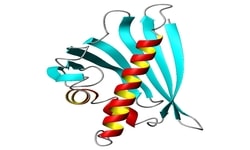Structural biology databases
A database is an organised collection of data. As a result of enormous research which is being done in Structural biology massive data has been produced. In order to assemble the data in a catalogued manner, bioinformatics databases are used. Various databases have been created to store biological data, such as sequence databases, structure databases, signalling pathway databases, etc.
A database is a structured collection of data. In the field of structural biology enormous research is being done and as a result massive data is being produced. In order to pile the data in an organized manner, bioinformatics databases are used. Various databases have been created to store biological data, such as sequence databases, structure databases, signalling pathway databases, etc. In the field of structural biology, the mainly used databases are Protein Data Bank (PDB), Electron Microscopy Data Bank, Protein Structure Classification Database (CATH) and Structural Classification of Protein (SCOP).
- Classification of protein structureÂ
- Classification of structural database
- Protein structure classification database
- Protein data bank
- Electron microscopy data bank
Related Conference of Structural biology databases
Structural biology databases Conference Speakers
Recommended Sessions
- 3-D Structure Determination
- Advancements in structural Biology
- Biochemistry and Biophysics
- Computational Approach in Structural Biology
- Drug Designing and Biomarkers
- Frontiers in Structural Biology
- Gene regulation and Cell Signalling
- Hybrid Approaches in structure prediction
- Molecular Biology
- Molecular biology techniques
- Molecular Modelling and Dynamics
- Proteomics and Genomics
- Sequencing analysis
- Structural Bioinformatics
- Structural Biology
- Structural biology databases
- Structural Biology in Cancer Research
- Structural enzymology
Related Journals
Are you interested in
- 3D Structure Determination - Structural Biology-2026 (France)
- Advanced Techniques in Structural Biology - Structural Biology-2026 (France)
- AI & Computational Structural Biology - Structural Biology-2026 (France)
- Biochemistry and Biophysics - Structural Biology-2026 (France)
- Computational Approach in Structural Biology - Structural Biology-2026 (France)
- Drug Designing and Biomarkers - Structural Biology-2026 (France)
- Hybrid Approaches for Structure Prediction - Structural Biology-2026 (France)
- Membrane Proteins and Receptors - Structural Biology-2026 (France)
- Molecular Modelling and Dynamics - Structural Biology-2026 (France)
- Proteomics and Genomics - Structural Biology-2026 (France)
- Structural Bioinformatics and Computational Biology - Structural Biology-2026 (France)
- Structural Biology in Cancer Research - Structural Biology-2026 (France)
- Structural Virology - Structural Biology-2026 (France)
- Structural Virology and Infectious Diseases - Structural Biology-2026 (France)
- Structure-Based Drug Discovery - Structural Biology-2026 (France)
- Structure-Based Solutions to Global Health Challenges - Structural Biology-2026 (France)
- Structure-Function Relationships - Structural Biology-2026 (France)
- The Structural Basis of Disease - Structural Biology-2026 (France)

